 |
Frisco West Shops |
 |
The Arnold Engineering and Construction Company of Chicago got the contract to construct West Shops in 1907. They officially opened on July 5, 1909. When built the Power House delivered both AC and DC electricity to the shop buildings. This occured before the city of Springfield had wide spread electricity. The power house was easily spotted by the 217 ft. tall concrete smokestack. There was also a 150 ft. tall water tower. |
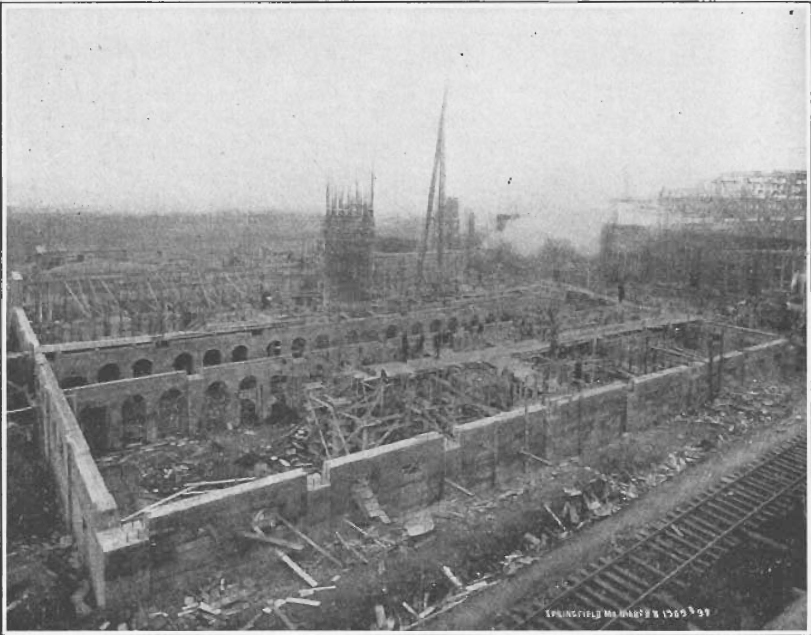 |
Frisco Man Magazine April 1909, Springfield, MO Public Library Collection |
View of the West Shops under construction. Scroll down to Page 11 |
 |
From Frisco Museum All Aboard Vol. 5 No. 1 pg. 9 |
This is the layout of the shop building when they were built in 1909. |
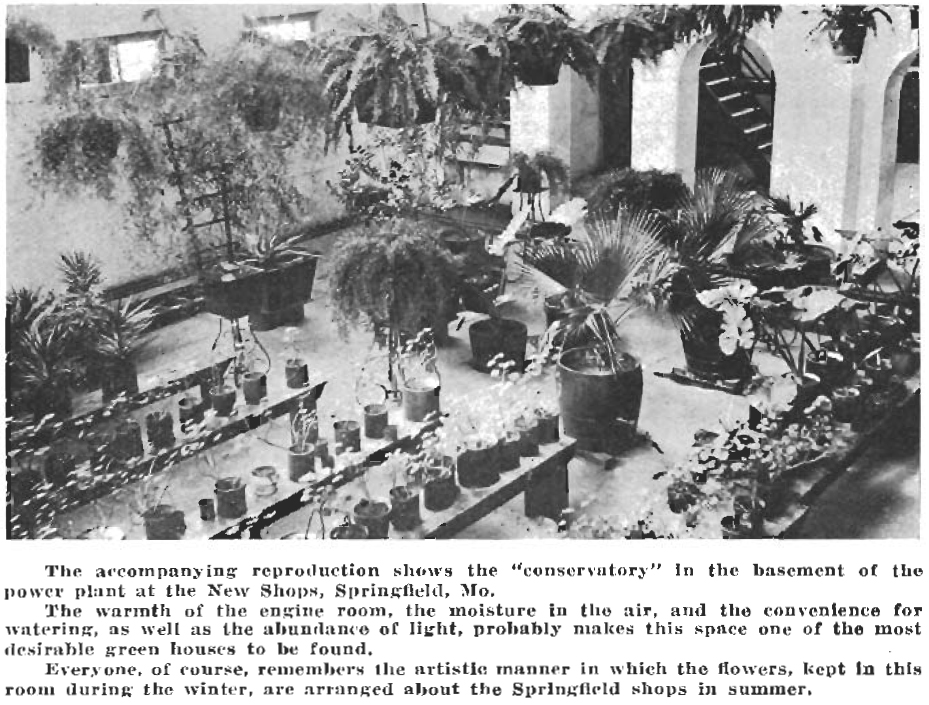 |
Frisco Man Magazine Feb. 1914, Springfield, MO Public Library Collection |
 |
||
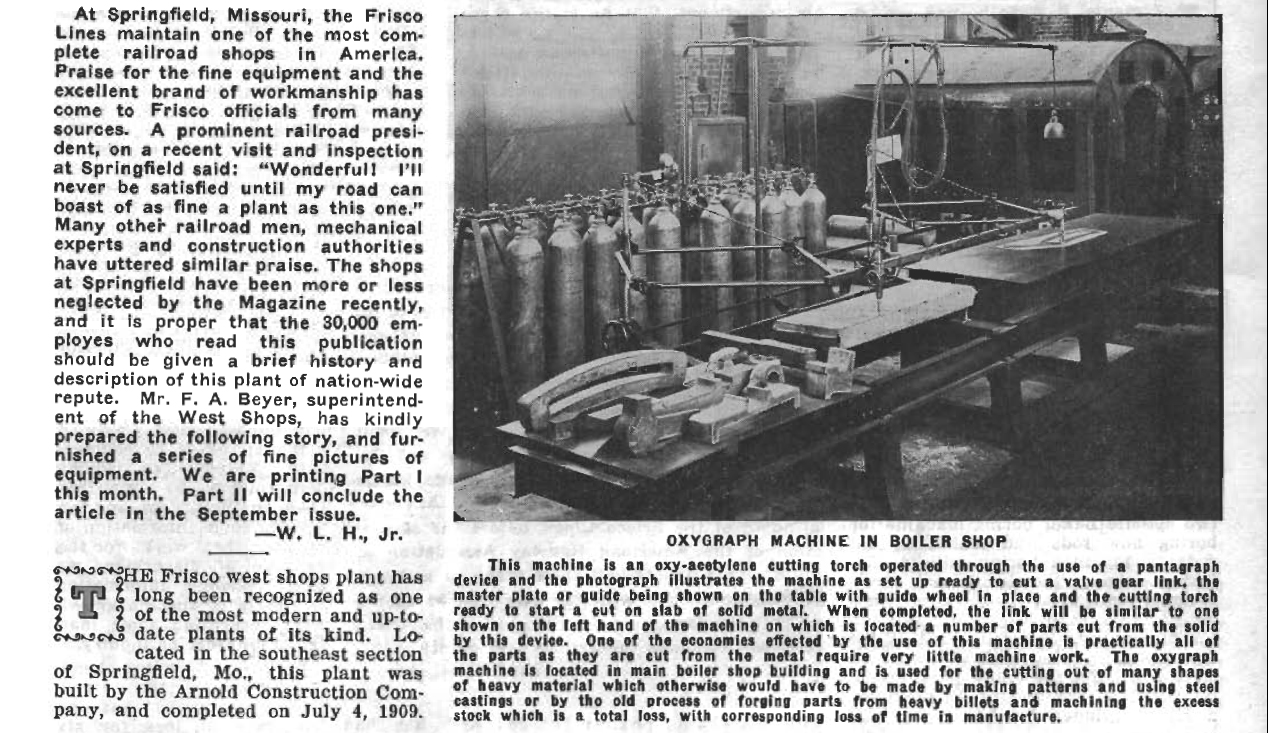 |
||
 |
||
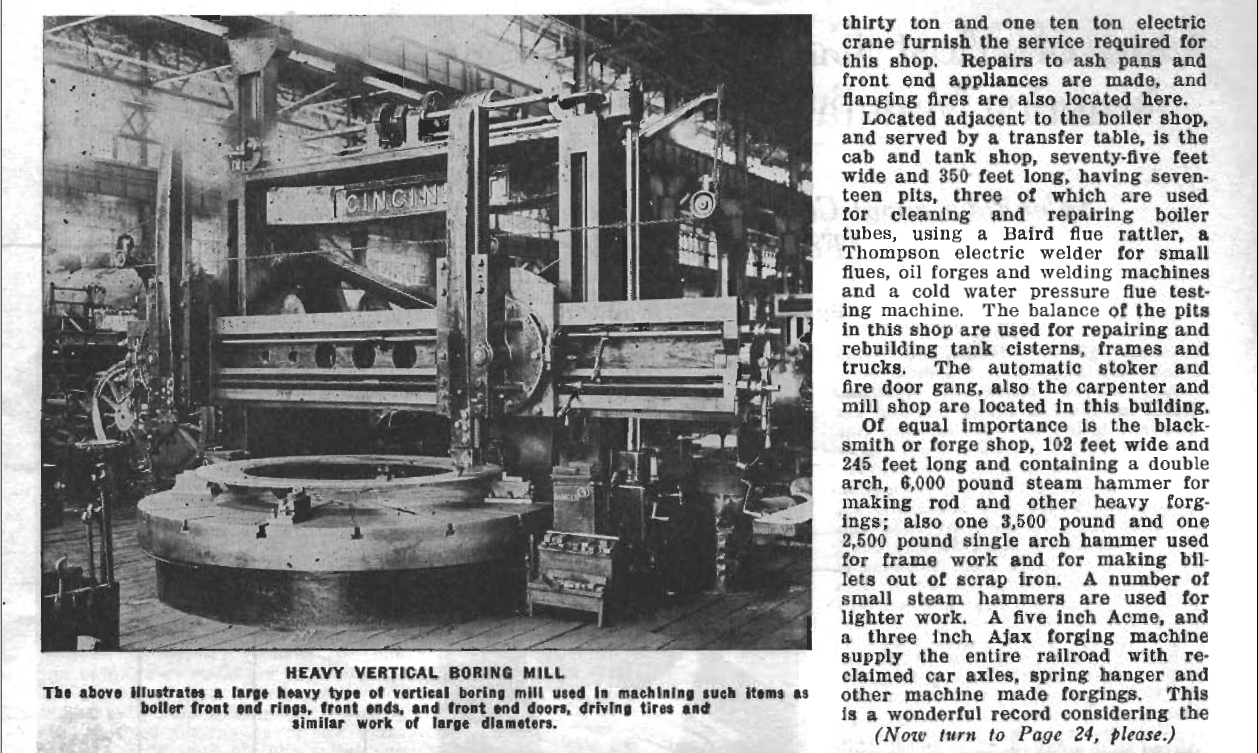 |
||
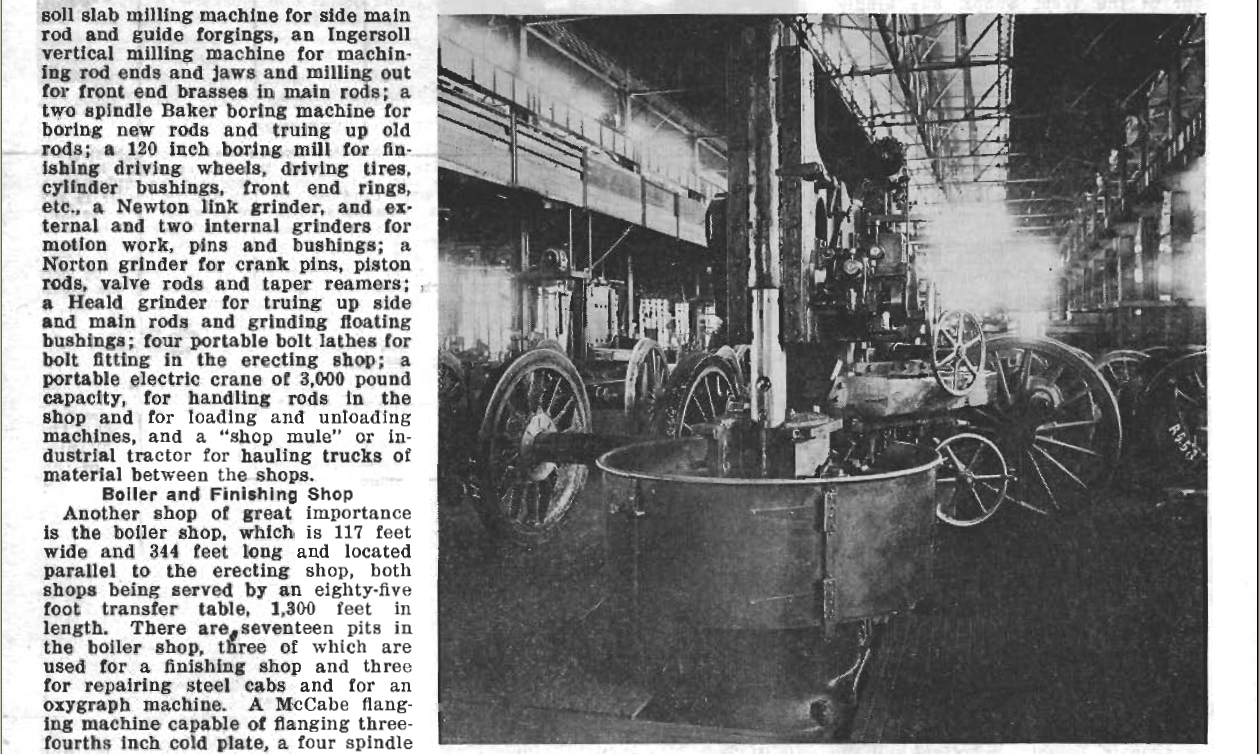 |
||
 |
||
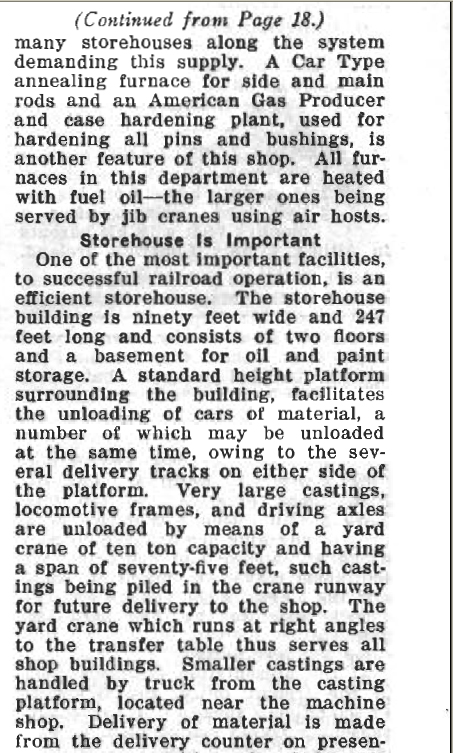 |
||
 | ||
Frisco Employees Magazine March 1928, Springfield, MO Public Library Collection |
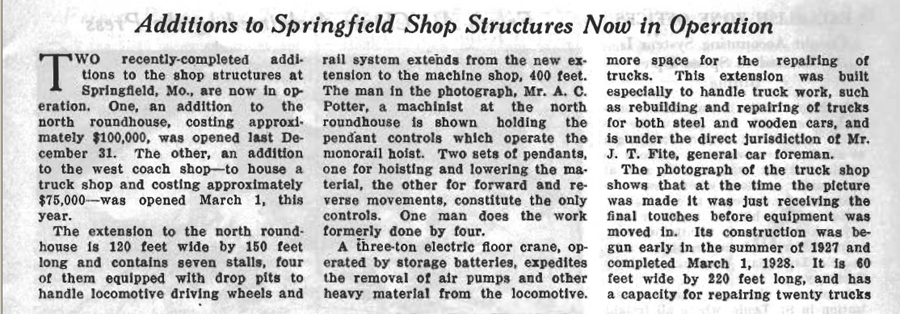 |
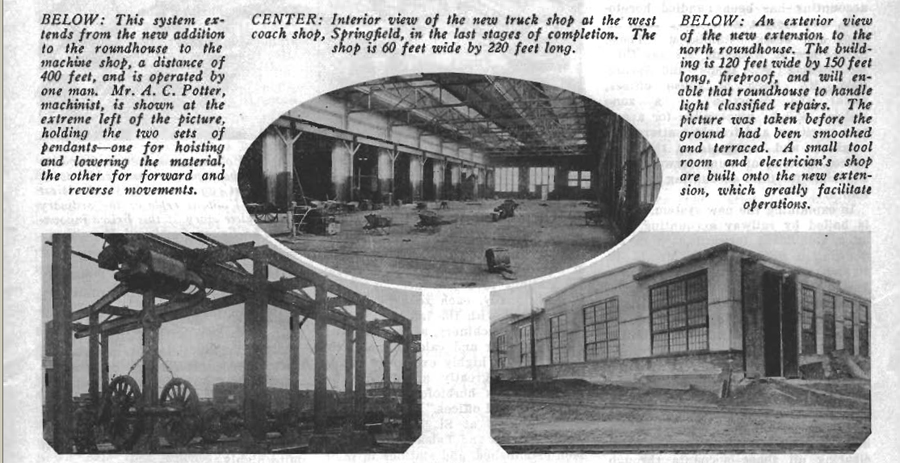 |
 |
Frisco Employees Magazine March 1928, Springfield, MO Public Library Collection |
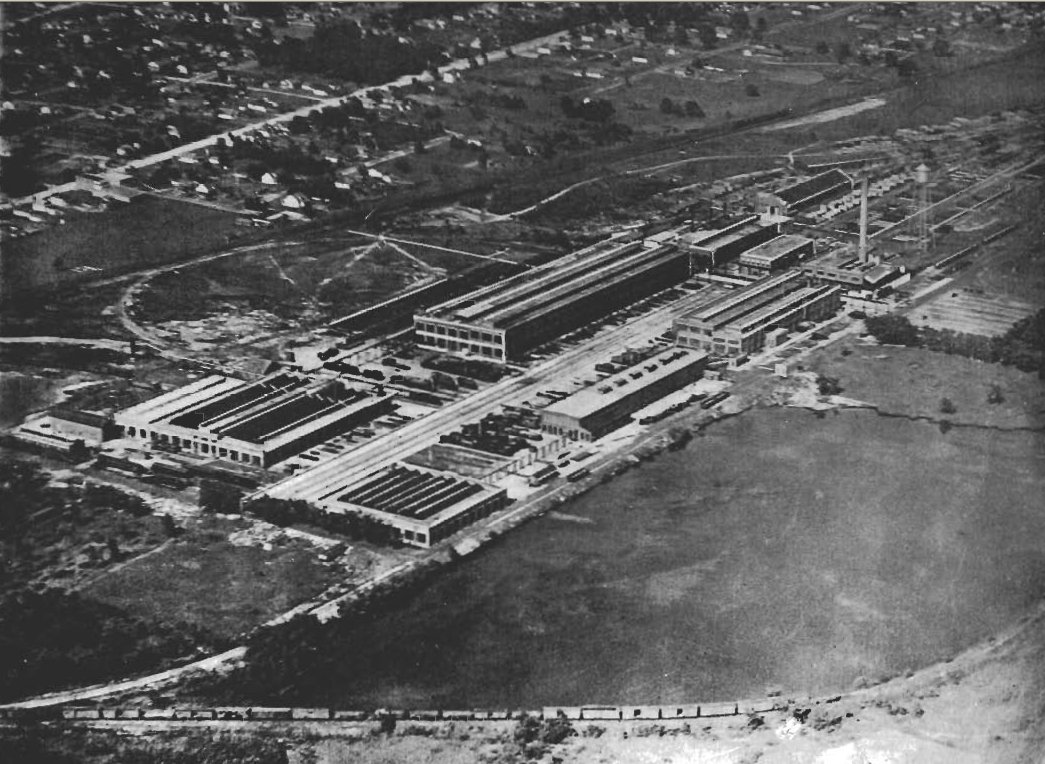 |
This aerial view of West Shops was taken in April of 1934. Lake Frisco was located in the lower right corner of this scene. These facilities were originally intended to be maintenanceonly facility for Frisco motive power, passenger cars, and freight equipment. The receiving, storage , and car classification operations remained at the North Shops a couple of miles east of this location. |
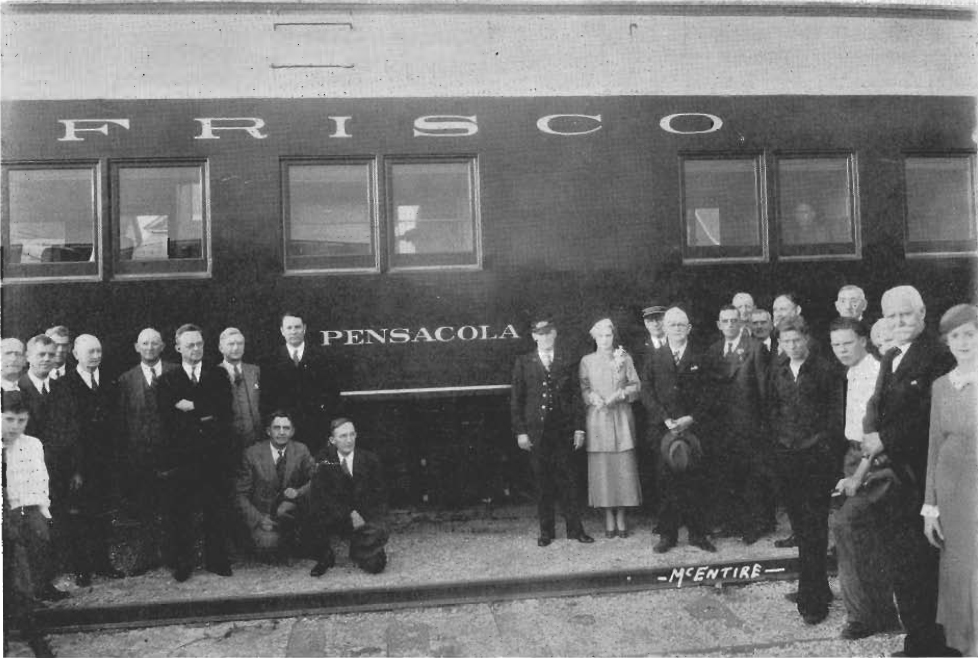 |
The coach shops were always innovative. In 1935 they unveiled a couple of new welded sleeper-buffet-coaches. At the time only one other railroad was building passenger cars by welding instead of riveting. The two cars were the Memphis and the Pensacola. |
 |
In this view two buildings have been added from the original layout shown at the top of this page. One is in the center of the south side. (Can anyone identify the purpose of this building.) The second is in the upper right corner. This building was later called the lunber or supply building. Key: 3. Paint shop 4. Coach shop 5. unknown 6. Machine and erection shop 7. Boiler shop 8. Power house, smoke stack and water tower 9. Store house 10. Forge shop 11. unknown |
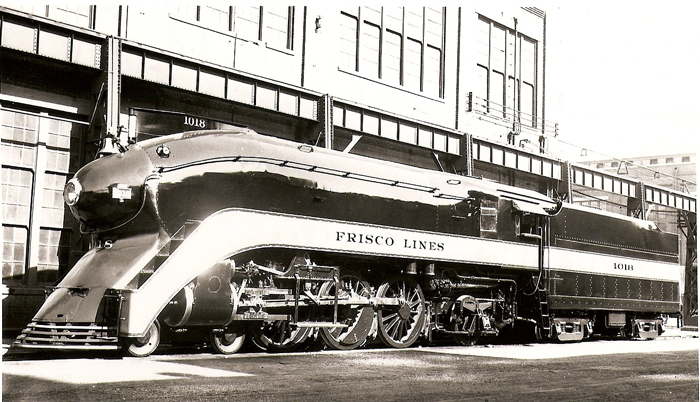 |
One of three examples, 1018, 1026, and 1031, of streamlining applied to engines for the streamstyled Firefly in 1938. This shows the quality of the work of the shop forces in the 1930s. At the same time, the coach shop was rebuilding some heavyweight cars for this streamlined train. |
 |
From the Springfield/Greene County Library, Frisco Collection |
Over the period of 1937 to 1941, the 1060-class of Pacific locomotive, 4-6-2s, were converted by the West Shops into Hudsons, 4-6-4s, with the same numbers. In 1940, engines 1060, 1061, 1063, 1066, 1067, and 1068 received a less flashy version of the Firefly streamlining. |
 |
From the Springfield/Greene County Library, Frisco Collection |
In 1938, Mountains 1503 and 1504 received the less flashy version of the streamling. |
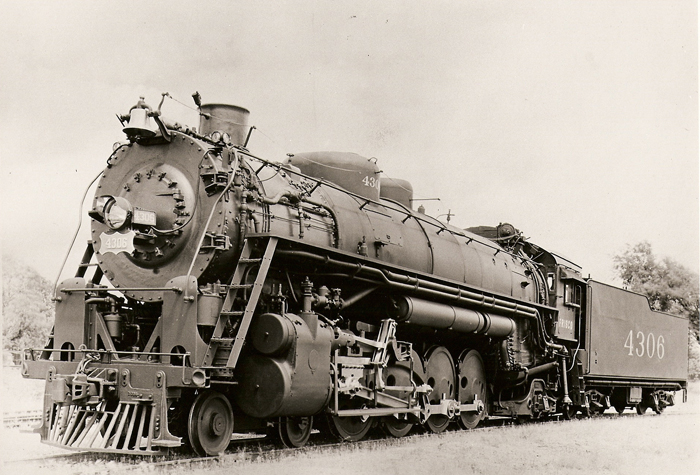 |
This is another example of the work of the erection shops. The boiler of this engine began on a 2-10-2. The erection shops placed that boiler on top of the frame of a new high speed 4-8-2. |
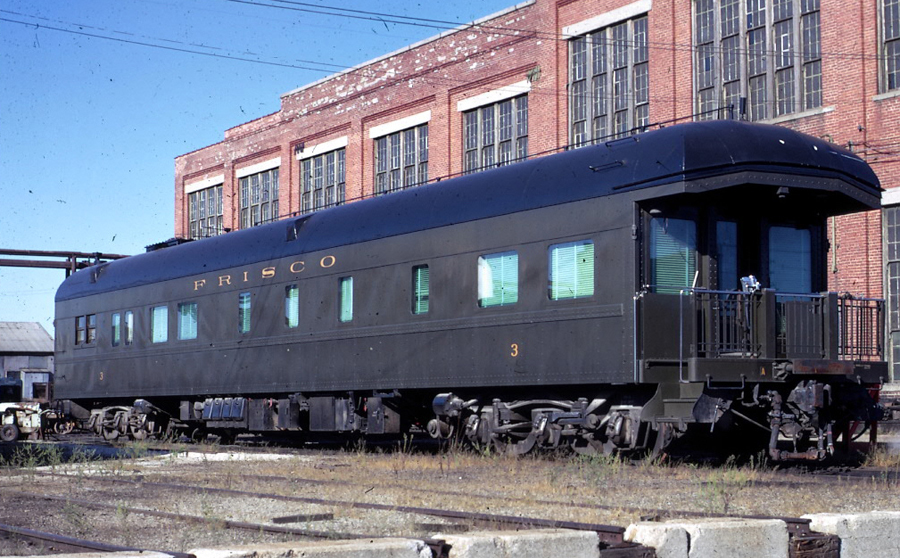 |
Mike Condren Photo |
Business car #3 started as a coach built by ACF in 1912. In 1942 the West Coach Shop converted the coach into "soldier diner" #648. In 1948 it was converted by these shops into business car #4. In 1954 it was renamed Springfield. In 1963 it became #3. In 1966 it was sold to a private individual. A more detailed description appears in All Aboard Vol. 2 No. 1 pg. 4. |
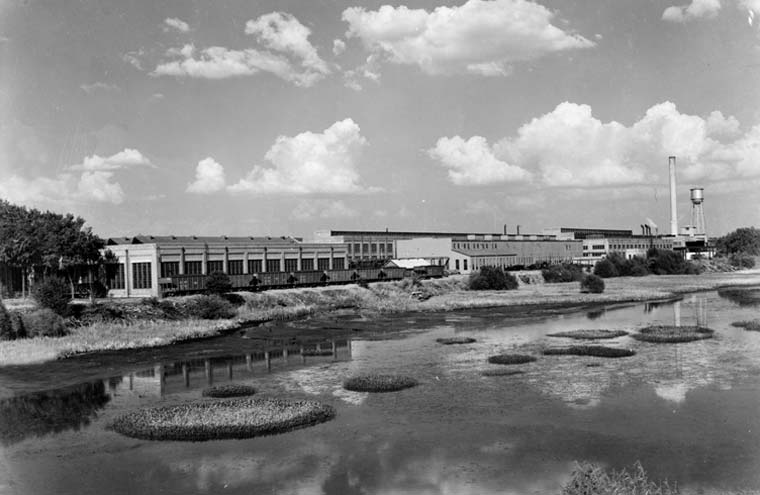 |
From the Springfield/Greene County Library, Frisco Collection |
| A view of the shop buildings across what was known as Lake Frisco. |
FRISCO ANNOUNCES $5,000,000 PROGRAM for SPRINGFIELD |
 |
From Frisco Folks 12/46 |
| This aerial view looking east shows the existing West Shops and labels of the improvements to be made. Frisco Folks 12/46 |
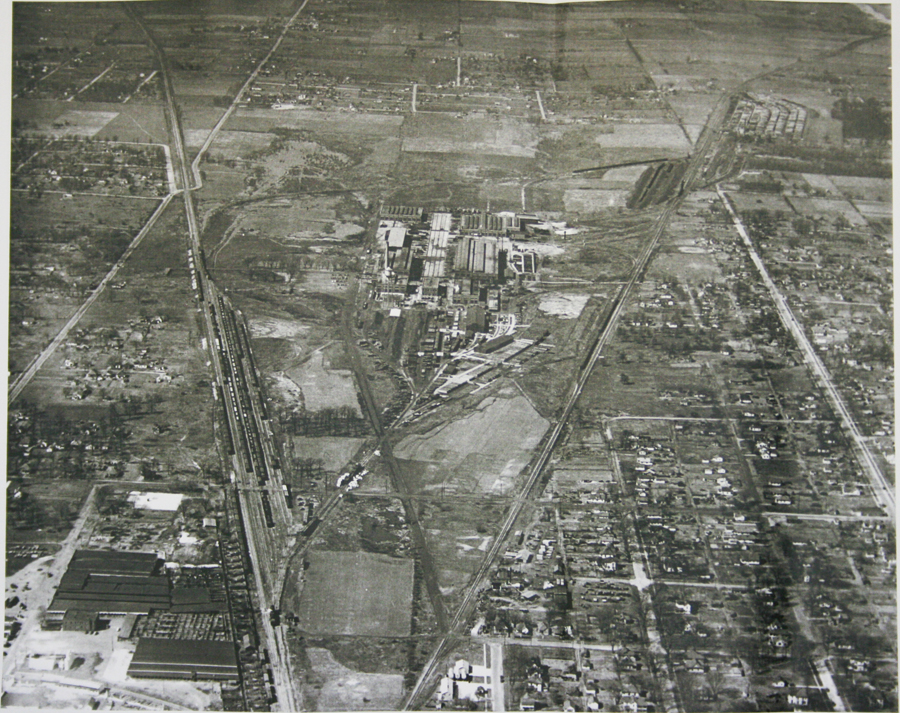 |
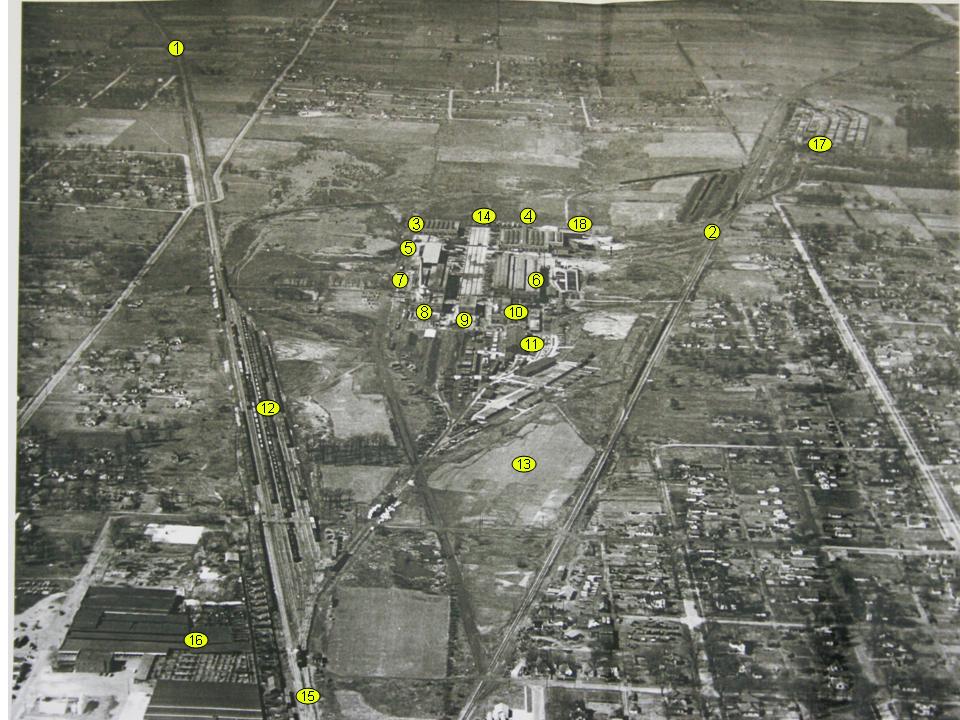 |
The Arnold Engineering and Construction Company of Chicago got the contract to construct West Shops in 1907. The Frisco West Shops first opened on July 5, 1909. They were located a couple of miles west of the steam locomotive service facility of the North Shops. When built the Power House delivered both AC and DC electricity to the shop buildings. This occured before the city of Springfield had wide spread electricity. The power house was easily spotted by the 217 ft. tall concrete smokestack. There was also a 150 ft. tall water tower. In the 1930s the erection shop rebuilt three 1019-class Pacific type of locomotives with streamlining for the new Firefly service from Kansas City to Oklahoma City. The coach shops rebuilt some heavy weight cars for this service. Late in the 1930s the erection shops also rebuilt 34 of the spot-class of 2-10-2s into 11 of the 4300-class and 23 of the 4400-class Mountain locomotives. Ten of the 1060-class Pacifics were converted into 4-6-4 Hudsons. Several of the Hudsons, a couple of the Pacifics, and some of the 1500-class Mountains received streamlining in these shops. During WWII the coach shop converted several coaches into "soldier diners". In the late 1940s, some of these diners were converted into business cars. In the streamlined era, the 2 Meteor round-end diner-lounge-obs were squared off and the two Meteor dorm-coach combines were converted into coaches. Though the 1948 diesel shops are gone, these shops will celebrate their centennial in 2009. Key: 1. Mainline to Oklahoma City 2. High Line to Kansas City 3. Paint shop 4. Coach shop 5. unknown 6. Machine and erection shop 7. Boiler shop 8. Power house, smoke stack and water tower 9. Store house 10. Forge shop 11. unknown 12. Classification yard 13. Future site of diesel shop 14. Transfer table 15. Mainline to St. Louis 16. Stock yards 17. Tie creosoting yard 18. 1928 truck shop. |
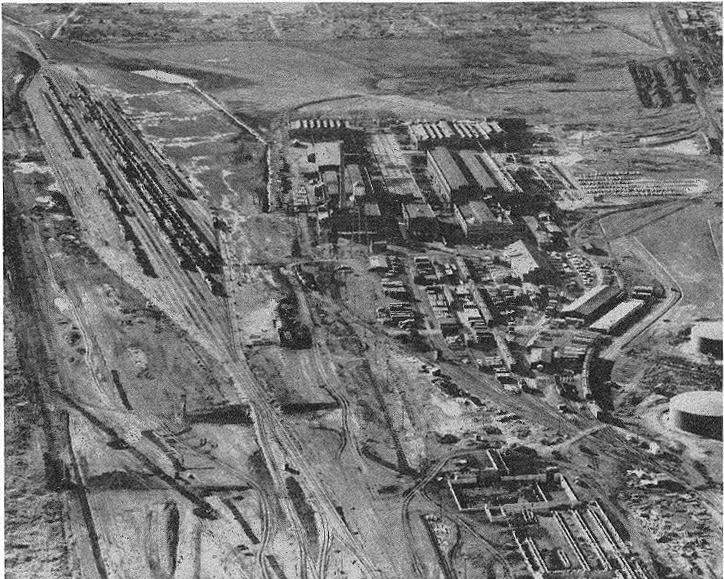 |
From Frisco magazine All Aboard 9/48 |
This aerial view of the shop area shows the beginnings of the diesel shop in the lower right. Construction has also started on the enlarged classification yard. New Terminal Facility
The diesel shop was torn down in 2006. |
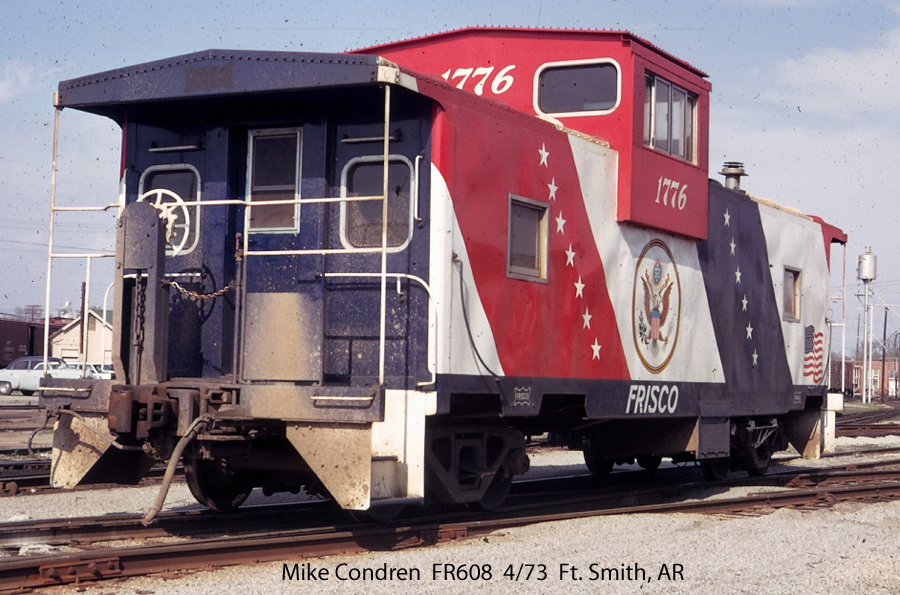 |
| In the 1970s the West Shops converted 40' box cars into extended vision cabooses. |
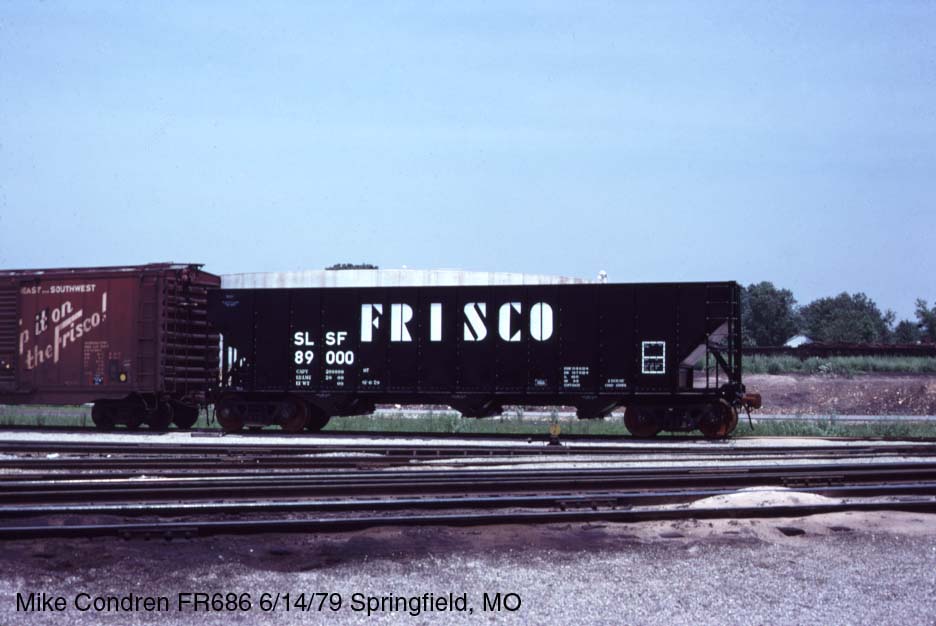 |
| The West Shops also assembled freight car kits such as this coal hopper. |
 |
The West Shops on Aug. 3, 2008. The shop buildings are currently leased by Trinity Industries to buid freight cars such as these unit coal train gondolas. The diesel shop once stood in the foreground but was torn down in 2006. |
Railroad shops demolition marks end of an era in Springfield MO
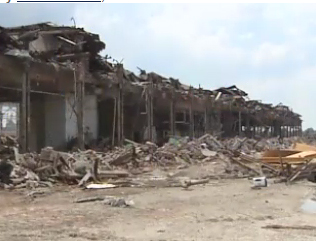 |
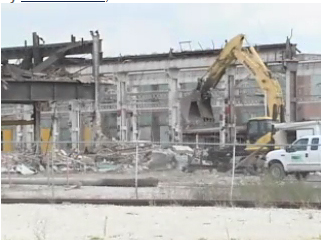 |
 |
| (The following story by Mike Landis appeared on the KY3 News website on July 30, 2010.)
SPRINGFIELD, MO From the North Kansas Expressway viaduct, you can see the remains of a different era crumbling to the ground. Rusted train tracks and piles of rubble litter the ground near the rail yards. The debris once made up the economic engine of Springfield: the Frisco Railroad Shops. The car shops, the last remaining large buildings of a once-massive complex, are being torn down. Historians say the facility built train cars, and helped build the city. At its height, the railroad had over 4,000 employees working in Springfield, said John Sellars, curator of the History Museum of Springfield-Greene County. One of the many employees of the shops complex over the years was Jerry Stewart. He toiled away in the neighboring Diesel Locomotive Shop. I went to work there when I got out of the Navy in 1970. Dad worked for the railroad and dad and got me on. I had a lot of hard times there. It was a good place to work, but it was hot and heavy," said Stewart. Stewart says working for the Frisco Railway was like being a part of a family. That family began to break up during a series of railroad mergers that weren't so kind to the city. In 1980, the Frisco was merged into the Burlington Northern Railroad. The BN slowly began downgrading its newly acquired facilities in Springfield, including the former Frisco headquarters operation. In 1995 the BN merged with the Santa Fe Railway to create the current BNSF. The Springfield Diesel Shops closed in 1996 as the new company sought to eliminate duplicate operations across its system. Hundreds walked home with a pink slip, while others were offered transfers to other BNSF hubs, such as Topeka, Kan. The car repair shops chugged on under the auspices of Trinity Railcar until 2008, before it shuttered due to the rough economy and an accompanying decline in rail traffic. BNSF decided there is not a market to lease the shops again, and the vacant buildings have become a liability for the company. We're demolishing three car shop buildings that have been up from the 1920s (from what I understand), and should wrap up in the next couple of weeks," said Andy Williams, a spokesman for BNSF, in a telephone interview. Ironically, more trains than ever are rolling through Springfield these days. We still have over 800 employees in Springfield, so Springfield remains a very important and critical part in our rail network, said Williams. Furthermore, he said, 3,400 people are employees of the railroads Springfield Division that extends through the Ozarks on lines to St. Louis, Memphis, Kansas City, and Tulsa. Still, reminders of the "old days" will soon be found only in pictures and memories. In response to the demolition of the car shops, Jerry Stewart said, its very sad. Being an old railroader, and [from] a railroad family, you hate to see it die. Williams says the train yards themselves, where freight cars are put together to form trains, will remain in operation. The locomotive fueling facility will also continue servicing the many trains that ply the rails through town each day. The railroad says, if the economy improves, it could end up increasing its presence and job numbers in Springfield. However, Williams said, thats simply a possibility and not a set plan. |
| Below are 4 bricks salvaged from the demolition of the West Shops. These bricks were contirbuted by Jason M. Hill of Cross Creek Architectural Artifacts, the firm that had the contract for salvaging the bricks. They hope to salvage 800,000 bricks to be used in new projects. A fitting reuse of these bricks. The story of this package made the postman laugh and explain that he had never delivered bricks before. |
 |
Frisco Convention |
This page was designed and is maintained by Mike Condren. If you have materials
that you would like to contribute, contact me at mcondren@cbu.edu